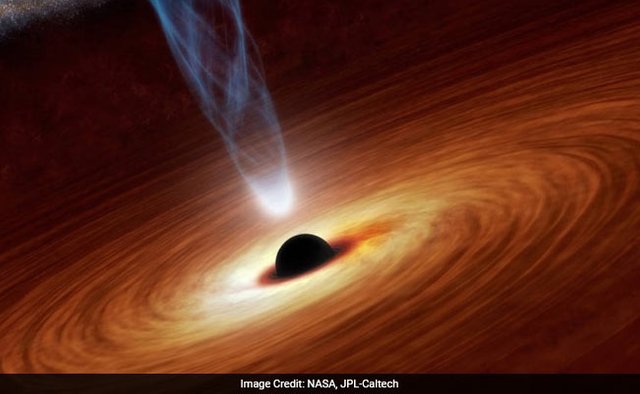
Scientists have discovered the farthest known super-massive black hole - a matter-eating beast that is 800 million times the mass of our Sun.
Astronomers combined data from NASA's Wide-field Infrared Survey Explorer (WISE) with ground-based surveys to identify potential distant objects to study, then followed up with Carnegie Observatories' Magellan telescopes in Chile.
Researchers identified candidates out of the hundreds of millions of objects WISE found that would be worthy of follow-up with Magellan.
"This black hole grew far larger than we expected in only 690 million years after the Big Bang, which challenges our theories about how black holes form," said Daniel Stern of NASA's Jet Propulsion Laboratory in the US.
For black holes to become so large in the early universe, astronomers speculate there must have been special conditions to allow rapid growth - but the underlying reason remains mysterious.
The newly found black hole is voraciously devouring material at the centre of a galaxy - a phenomenon called a quasar.
This quasar is especially interesting because it comes from a time when the universe was just beginning to emerge from its dark ages.
The discovery will provide fundamental information about the universe when it was only 5 percent of its current age.
"Quasars are among the brightest and most distant known celestial objects and are crucial to understanding the early universe," said Bram Venemans of the Max Planck Institute for Astronomy in Germany.
The universe began in a hot soup of particles that rapidly spread apart in a period called inflation.
About 400,000 years after the Big Bang, these particles cooled and coalesced into neutral hydrogen gas.
However, the universe stayed dark, without any luminous sources, until gravity condensed matter into the first stars and galaxies.
The energy released by these ancient galaxies caused the neutral hydrogen to get excited and ionise, or lose an electron. The gas has remained in that state since that time.
Once the universe became re-ionised, photons could travel freely throughout space. This is the point at which the universe became transparent to light.
Much of the hydrogen surrounding the newly discovered quasar is neutral. That means the quasar is not only the most distant - it is also the only example we have that can be seen before the universe became re-ionised.
"It was the universe's last major transition and one of the current frontiers of astrophysics," said Eduardo Banados, astronomer at Carnegie Observatories in the US.
Hi! I am a robot. I just upvoted you! I found similar content that readers might be interested in:
https://www.ndtv.com/world-news/most-distant-blackhole-discovered-nasa-1784792
Downvoting a post can decrease pending rewards and make it less visible. Common reasons:
Submit